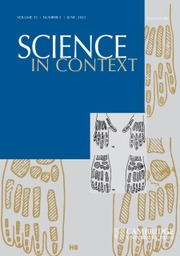No CrossRef data available.
Article contents
A dangerous preposition: The boundaries of mathematics
Published online by Cambridge University Press: 23 December 2024
Argument
This essay takes inspiration from Herbert Mehrtens’ 1995 claim that the “history of mathematics is an integral part of intellectual history.” It asks why, despite the tremendous transformation the historiography of mathematics has undergone since the field began to professionalize in the 1970s, historians of mathematics repeatedly complain that their field has been marginalized. The answer, I suggest, is not due to the fact that mathematics is less amenable to the types of social, cultural, or material analysis that came to dominate the history of science in recent decades. Rather, at issue is that most historians have adopted mathematicians’ own definition of mathematics. The history of mathematics professionalized at a particular moment, one in which mathematicians were concerned about the limits and boundaries of their field. As such, they were invested in drawing boundaries around the “proper” confines of the field. Historians of mathematics have followed suit, and similarly restricted what did and did not belong in the history of mathematics. Following Mehrtens, however, and insisting that the history of mathematics is an integral part of broader intellectual history, a more capacious conception of the field is possible.
- Type
- Research Article
- Information
- Science in Context , Volume 35 , Issue 4: Modernism in science and mathematics: A second look at Herbert Mehrtens , December 2022 , pp. 426 - 437
- Copyright
- © The Author(s), 2024. Published by Cambridge University Press



